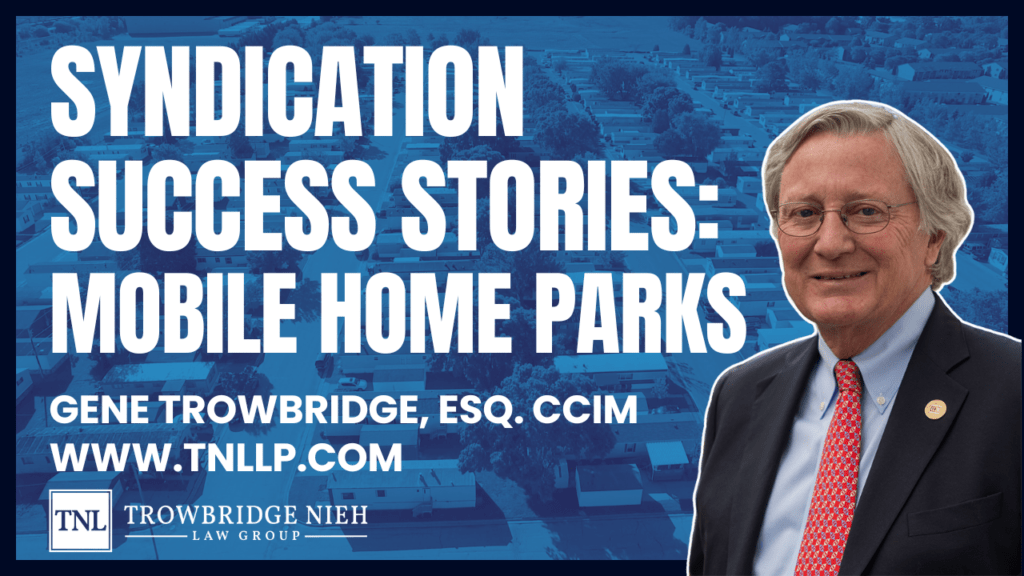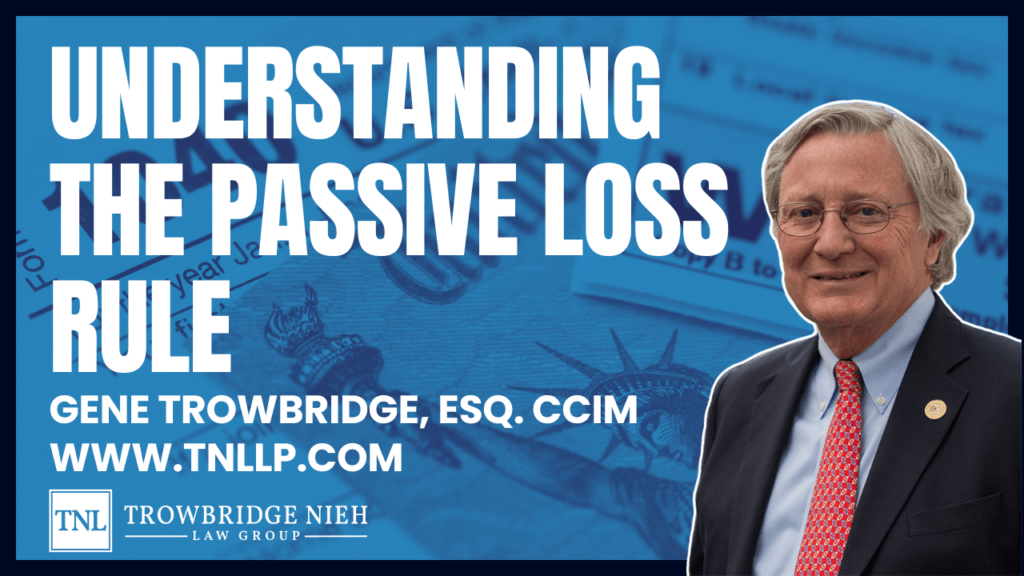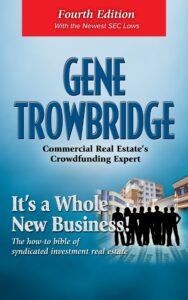Check out our handy Capital-Raising Exemptions chart.
Transcription:
Jon Nieh: Good morning, everybody. Welcome back to TLG Live. I am Jon Nieh, one of the founding partners at Trowbridge Law Group and today’s topic, well, the title for today’s video is Every Exemption Explained. So I wanted to discuss today, basically, the regulatory framework in which we operate. [chuckle] Basically, just give a quick overview of all the exemptions, pros and cons of each one, to illustrate the different options that are available to our clients, to people out there, companies out there that are trying to raise money; what are your options as far as what exemptions are available, which one should you really be using.
JN: So to start out, basically, the general rule is every security that is sold must be registered with the SEC unless exempt. So registration basically means you’re going public. If you register your securities with SEC, you’re registering them for sale to the public. An IPO is a registration, initial registration, with SEC. So if you’re a company out there and you don’t want to become a publicly reporting company because, obviously, it’s expensive to do and there’s ongoing reporting requirements that you have to do every year to stay a reporting company, what are your alternatives? Well, every security must be registered unless exempt.
JN: So what does that mean? What is exemption? Well, let me show you. So, I hope this works, I’m going to share this document. Okay, so this is a report that’s put up at the SEC every year basically to give the public an idea of how much money is raised under each exemption versus how much is raised under public offerings. This picture… It’s not really a graph but this picture shows the time period between June or sorry, July 1st, 2019 to June 30th, 2020 and this is how much was raised under each type of exemption. So on the right, you see these orange bubbles. That’s all the public offering ones, companies raising money on the stock market, essentially, and there was about 1.5 trillion raised there. On the left, that’s all the exemption, that’s all private offerings raising money under these different types of exemptions, and you could see how much larger that is compared to public offerings, which I think surprises a lot of people; the fact that more money is raised privately than it is publicly, which is interesting and cool.
JN: Anyways, these bubbles are basically the exemptions that we have to work with in our world, in our securities world. So what is each one? Let’s start with the smaller ones first. So crowdfunding is regulation crowdfunding. New exemption that came out in 2016, basically, to allow companies to crowdfund equity. So previously, crowdfunding companies were things like Kickstarter or Indiegogo, GoFundMe, you could raise money through crowdfunding campaigns but you couldn’t sell equity in your company, you couldn’t sell securities. Well, they created this new equity crowdfunding under Regulation CF, regulation Crowdfunding to allow people to do so.
JN: So Regulation Crowdfunding, what does it do? You can advertise, you could raise money, basically, from the public but there’s a cap on how much you could raise. Previously, it used to be $1 million. They recently increased that to $5 million, so you could raise up to $5 million from anybody but you have to go through a registered crowdfunding portal. There’s only so many of those out there and there’s only really a few that are big that have the bulk of the investor pool. So if you are thinking about doing a crowdfunding, a Regulation Crowdfunding offering, you want to get listed on one of those portals. So you’re kind of at their whim as far as types of companies that they want to be listed on their portal. So if you’re interested in Regulation Crowdfunding, my suggestion is always reach out to these portals, see what they’re looking for, see if your company is something that they would be interested in putting on their portal.
JN: Other things to keep in mind as far as cons for Regulation CF, portals charge a fee, obviously. It’s pretty much like a broker-dealer fee. They charge a percentage with the amount of money that you’re raising, and there’s also ongoing reporting requirements that you need to do if you’re doing a Regulation CF, so yearly reports to the SEC. So it’s not for everybody. It’s mostly for smaller startup companies, just getting started. It’s like an alternative to angel investors or venture capitalists. So if you don’t wanna do a round of angel investors or VCs, this is an alternative for you, Regulation CF.
JN: The next bubble up is Rule 504 which, if you look, only $171 million was raised in that year under Rule 504. So Rule 504 comes from Regulation D. It’s a rule under Regulation D. Basically allows a company to raise up to $10 million in a single year. From accredited investors, I think you are allowed up to 35 sophisticated. No one really uses 504, if you look. [laughter] Even though more was raised under that than crowdfunding, but no one really uses it because the one drawback is it does not preempt state law. So if you do a rule 504 offering, you have to basically go to every state that you have an investor residing in, and find a state securities exemption that lets you raise money from your state, which can be a giant headache especially if you raise money from several states. So for that reason, most people don’t use it, it’s just easier to use the other types of exemptions.
JN: The next one up, the next little bubble up, they’re all kind of the same size, but look at the numbers, the next biggest one is Regulation A, which they raised about $1.3 billion in that year under Regulation A. Regulation A also kind of new came about around the same time that Regulation, or actually didn’t come about on the same time, but it was changed around the same time Regulation Crowdfunding came about under the Jobs Act. The Jobs Act modified Regulation A to make it easier to use. Basically under regulation A, it’s similar to crowdfunding, you can advertise, you could raise money from the public, basically. But the cap is much higher than Regulation Crowdfunding. So right now it’s up to $75 million. But a lot of people like to refer to Regulation A as a mini IPO or mini public offering, because it is very similar to urge registration. So under Regulation A, you have to not really register your securities with SEC, but you do apply for approval, so you have to get approved by the SEC before you could start raising money under Regulation A, which can take a long time, which is one of the drawbacks.
JN: On top of that, it’s kind of expensive, not as expensive as doing a public offering, but you’re gonna spend a lot of money in legal, accounting, so under Regulation A, depending on the tier that you’re under, you might have to get an accounting firm to audit your financials, or review your financials depending on the tier, which can add up as far as cost. And then another drawback is that there’s also ongoing reporting requirements under Regulation A, so you got the reports that you gotta do to the SEC. So all in all, it’s a little tedious, but the benefit of Regulation A, same as Regulation Crowdfunding is you could advertise, you can raise money from anybody, not accredited, accredited, it doesn’t matter, you can advertise your offering which is great if you need that.
JN: The next bubble Rule 506c, about $69 billion was raised in that time period for under 506c. This is also a relatively new exemption that came about with the Jobs Act, and you could see a lot more people are using it compared to Regulation A, Regulation Crowdfunding. So rule 506c basic highlights, no cap on how much you could raise, so unlimited money, you can advertise actually under 506c, but the main drawback is every investor that you accept into your offering must be an accredited investor, and you have to take steps to verify that they’re accredited. So it limits you as far as the number of investors that are available to you, so accredited investor basically is someone who’s rich, million dollars in net worth or over $200,000 of income each year. You can only take those people and you have to verify them. So it’s a little bit of a hurdle for companies to go through that process to verify.
JN: But benefits, no cap on how much you can raise, and you can advertise. Not only can you advertise, but you don’t have to go through some of the hoops that you do for Regulation CF and Regulation A. So Regulation CF and Regulation A, you have to disqualify your offering with the SEC, get approval before you can start raising money. 506c, there’s no application process. As soon as you’re ready to start raising money, you could basically start raising money, you can launch your offering tomorrow if you really wanted to. So super, super fast. No cap on how much money you could raise. But everyone has to be accredited and you have to verify that they’re accredited. So that’s those kind of smaller bubbles, and you get to the huge bubble on the left, $1.4 trillion raised under Rule 506b. And really this is the rule that’s been around the longest. The other ones are kind of new came about from the Jobs Act, but rule 506b has been around since the 1980s basically, and this was how all companies raised money practically, essentially, until a few years ago.
JN: And you can see it’s still the predominant way that private companies are raising money, $1.4 trillion, that’s almost as much as how much is raised on public markets each year, which is crazy. But high level highlights of rule 506b. So the main difference from the other ones is no advertising, you cannot advertise your 506b offering, you cannot solicit investors to your 506b offering. What that means is traditionally, you can only bring in people that you had a pre-existing and substantive relationship with. So that’s the biggest drawback with 506b. But the benefits of 506b, no cap on how much money you could raise just like 506c. No cap on the number of investors that you bring in if they’re accredited, so unlimited accredited investors, but you are allowed up to 35 sophisticated investors, which is kind of a term of art, you gotta watch our other videos if you want to know exactly what that means.
JN: But you’re allowed up to 35 non-accredited, but sophisticated investors. But the biggest benefit, I think of 506b is there’s no verification process, so you don’t have to go through this additional step of verifying accredited investors. And on top of that, just like 506c, there’s no time constraint, there’s no registration process with the SEC. Basically, as soon as you’re ready to start raising money, you could raise money for 506b. And I think that’s the main reason why some people like using it, it’s fast, it’s cheap and there’s no additional hurdle that your investors have to go through to invest.
JN: Anyways, that is kind of a brief overview of all exemptions. What’s right for you if you’re thinking about raising money, it depends on a lot of things. So first question is, do you need to advertise to investors that you don’t know? If you do, then you have to pick one of the ones that allow advertising. If you don’t, then you could potentially use 506b. How much time do you have? If you need to start raising money immediately, or you’re doing a real estate syndication, and closing of a property is coming up in a month or two, then obviously, you need to do, use an offering that allows you to get up and running fast. So either 506b or 506c. If you have more time, then that gives you the ability to use other types of offerings where you have the time available.
JN: Do you want to have only accredited investors or do you want to be able to raise money from non-accredited investors? That’s another question you need to ask yourself. There’s tons of questions that you need to ask if you’re thinking about raising money and if you’re thinking about which exemption is right for you. Obviously, give us a call and we can discuss those things with you. Our firm, we do give free 30 minute consultation. So go to our website if you want to schedule one. Today is Thursday, that means we got another episode of TLG talks with Jean, he is going to interview I think today’s episode is Amanda Hahn and Matt McFarland. They’re CPAs. So they’re accountants. So I’m sure they’re going to talk about a lot of very important tax issues that apply to our clients and real estate syndicators in general. So I’m sure it’s gonna be a great episode and very informative. Go to our YouTube page today at noon to tune in. As always, thank you for watching if you’re watching, if not, then you won’t hear this message, obviously. But, Anyways, thanks for tuning in. I hope this was informative. And I’ll see you guys next week.
[music]




